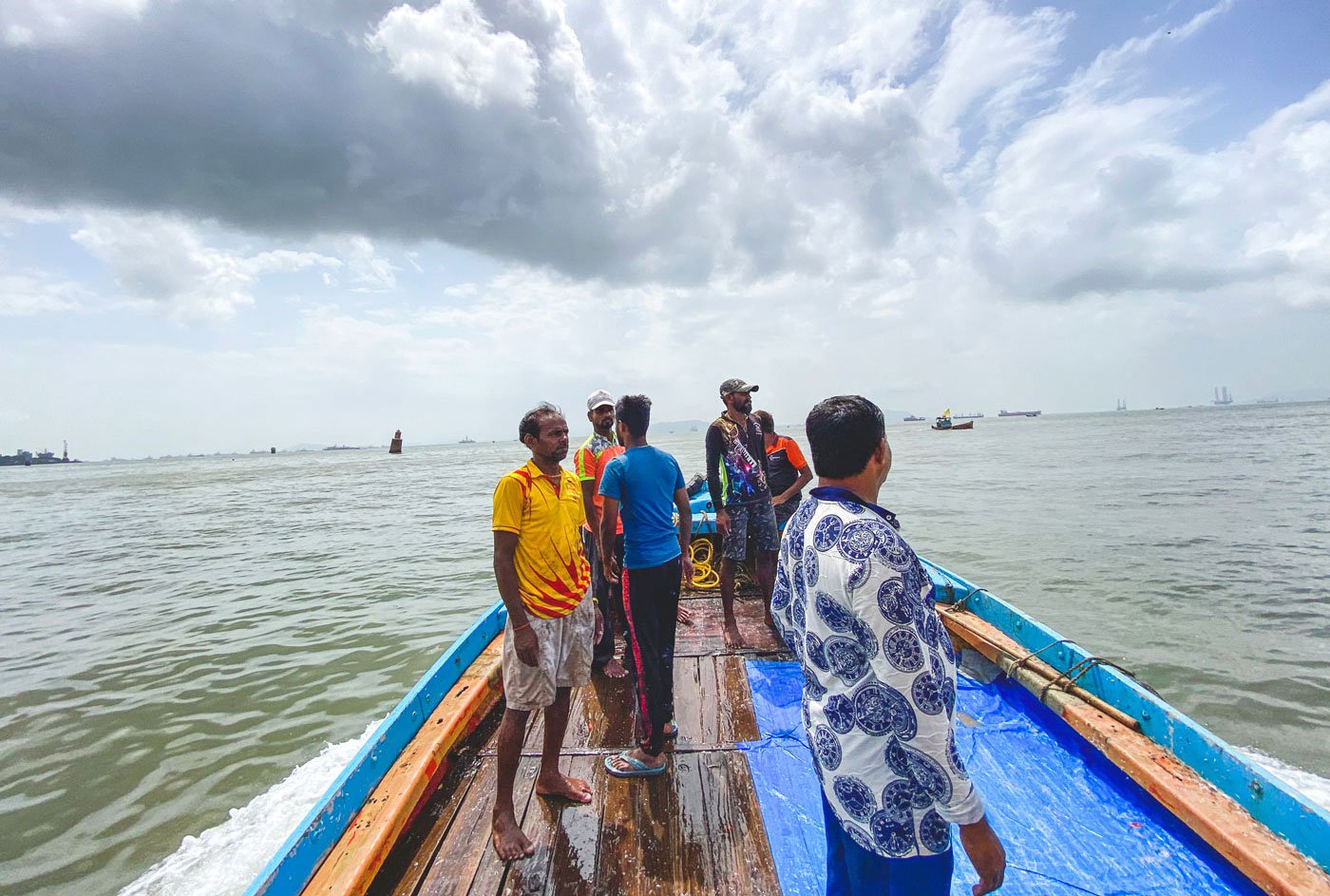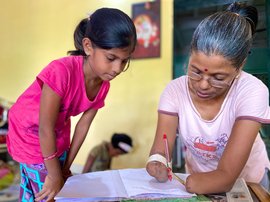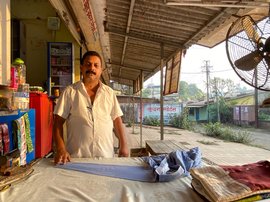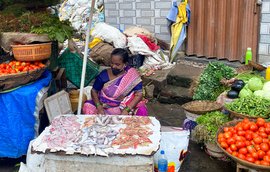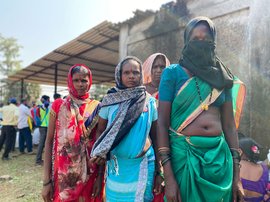It’s been a choppy few years for Dilip Koli – cyclones, decreasing fish catch, falling sales. Still, it’s the lockdown that began in March 2020 that’s proved to be the hardest.
“The troubles we faced in the past have not been half as bad as the last year,” says Dilip, a 50-year-old fisherman from the Koliwada in south Mumbai’s Colaba area. “There were people willing to fish and people ready to eat the fish, but there was no selling of fish [due to the lockdown, until September 2020]. The markets were closed and we had to dump our catch back into the sea.”
Dilip has been working from south Mumbai’s Sassoon Dock for around 35 years. He owns three boats and employs 8-10 fishermen. “During the lockdown we at least managed our rations, but other poor Koli fishermen were left with no food or money,” he says.
The fishermen start their workday around 4 a.m., making multiple 40-minute rounds trips into the sea not far from shore during the monsoon months. When the tide starts changing they rest for about an hour and then get back into the sea."We start early in the morning and finish by afternoon, by 2 or 3. We get to know about the tides through the moon. Only when it is very low tide or very high tide we don't go fishing,” says Dilip.
Some of the fishermen working on his boat, all from the Koli community, travel nearly 150 kilometres by train or hired vehicles from Washi Haveli, a village of 1040 people (Census 2011) in Raigad district’s Tala taluka to Sassoon Dock in south Mumbai. There they work from around June till August, before the Ganpati festival begins. The rest of the year they travel to other coastal parts of Maharashtra – mainly in Ratnagiri and Raigad districts – and earn Rs. 10,000-12,000 a month working on other people’s boats.
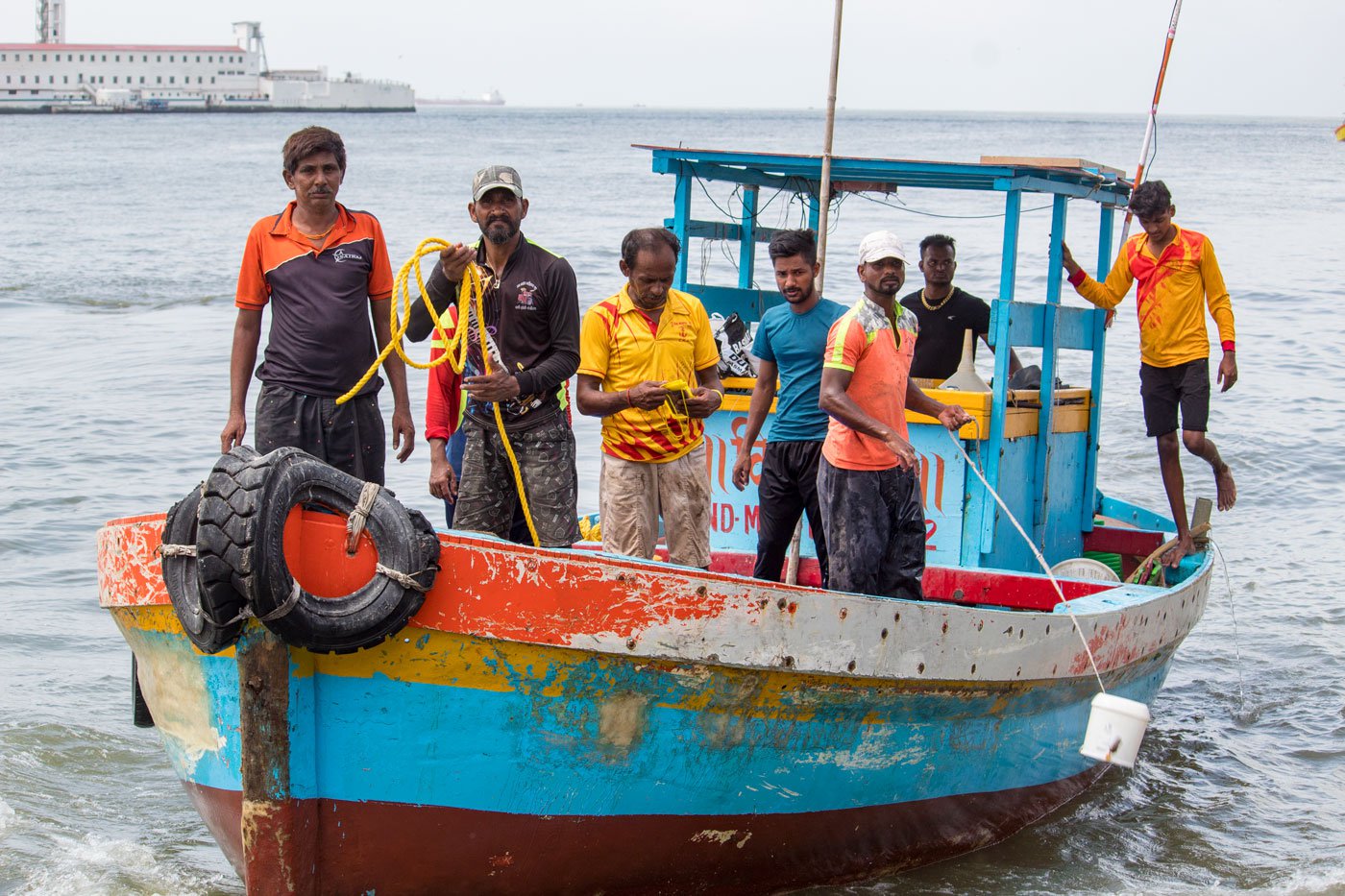
Koli fishermen from Washi Haveli, a fishing village in Raigad district, work at Sassoon Dock during the monsoon months. Many come there for the seasonal bombil (Bombay duck). They start their workday around 4 a.m. and wind up by 2 or 3 p.m.
Though deep-sea fishing activity is banned from late May to early August, Dilip says, “Creek fishing [with dol nets] is allowed here. We have been doing it for years. Our Colaba creek is famous for bombil [Bombay duck] and that fish only comes here in June and July. Fishermen from small villages of Maharashtra come here for our Bombay duck. They make Colaba their home for 2-3 months. It's good business.”
During those months at Sassoon Dock, says Priyal Duri of Washi Haveli village, he and other fishermen work on a percentage basis. “Half of the profit from a day’s catch goes to the boat owner and the rest is split amongst us,” he says. Priyal lost his father to Covid and his mother to leukaemia within three months last year. Unable to finish Class 12 because “we needed money for aai’s treatment” the 27-year-old has been fishing for nearly 10 years.
“During monsoons we earn about 700 rupees a day, but last year we hardly made 50 rupees daily. We were sitting at home for one whole year due to Covid,” he adds. With no work, fishermen and their families in Washi Haveli started running out of rations by May 2020. “We ate whatever fish we could catch at a nearby creek. But after the cyclone [Nisarga], we could barely manage food and water. It was the worst year [2020] we have ever seen,” adds Priyal.
Cyclone Nisarga hit Maharashtra’s coastal districts on June 3, 2020. “We did not have electricity or phone connection for a month. Our homes were completely destroyed and we got no compensation from the government,” says Priyal, who had to borrow Rs. 40,000 from friends to rebuild the house where he and his older brother Chandrakant (also a fisherman) reside.
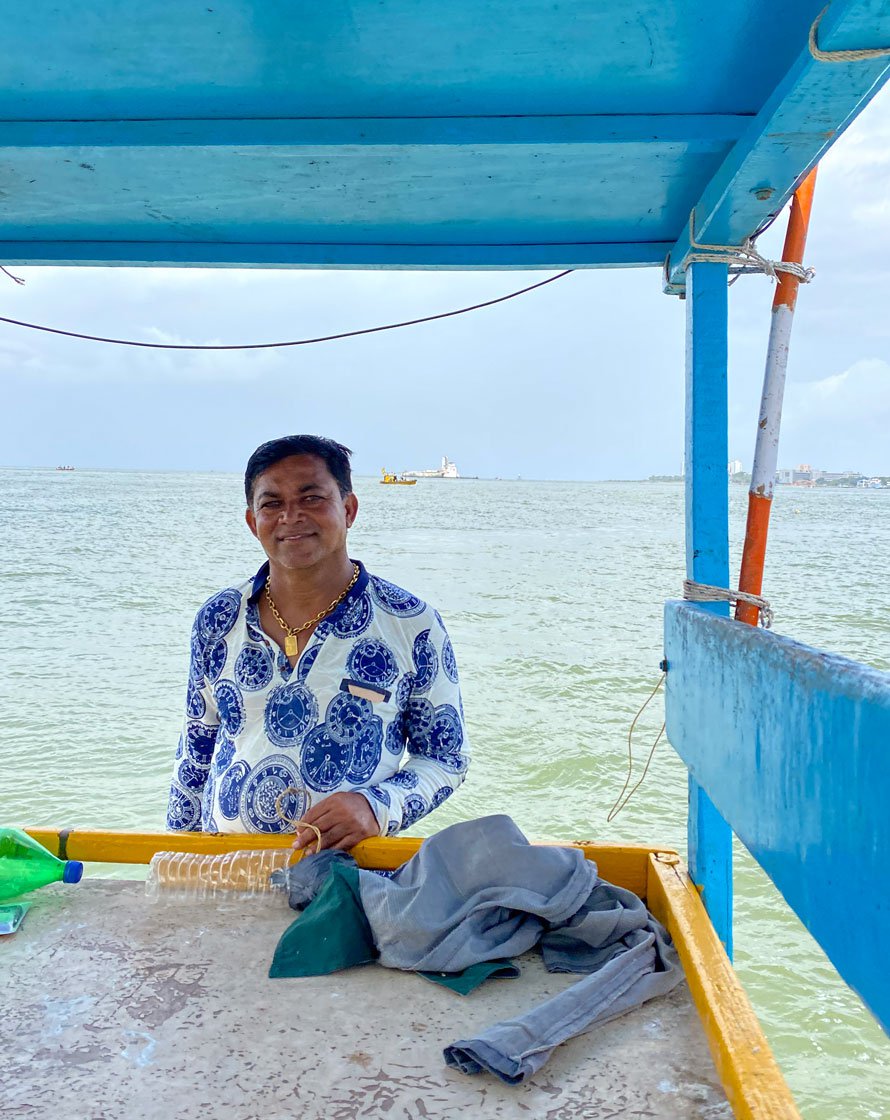
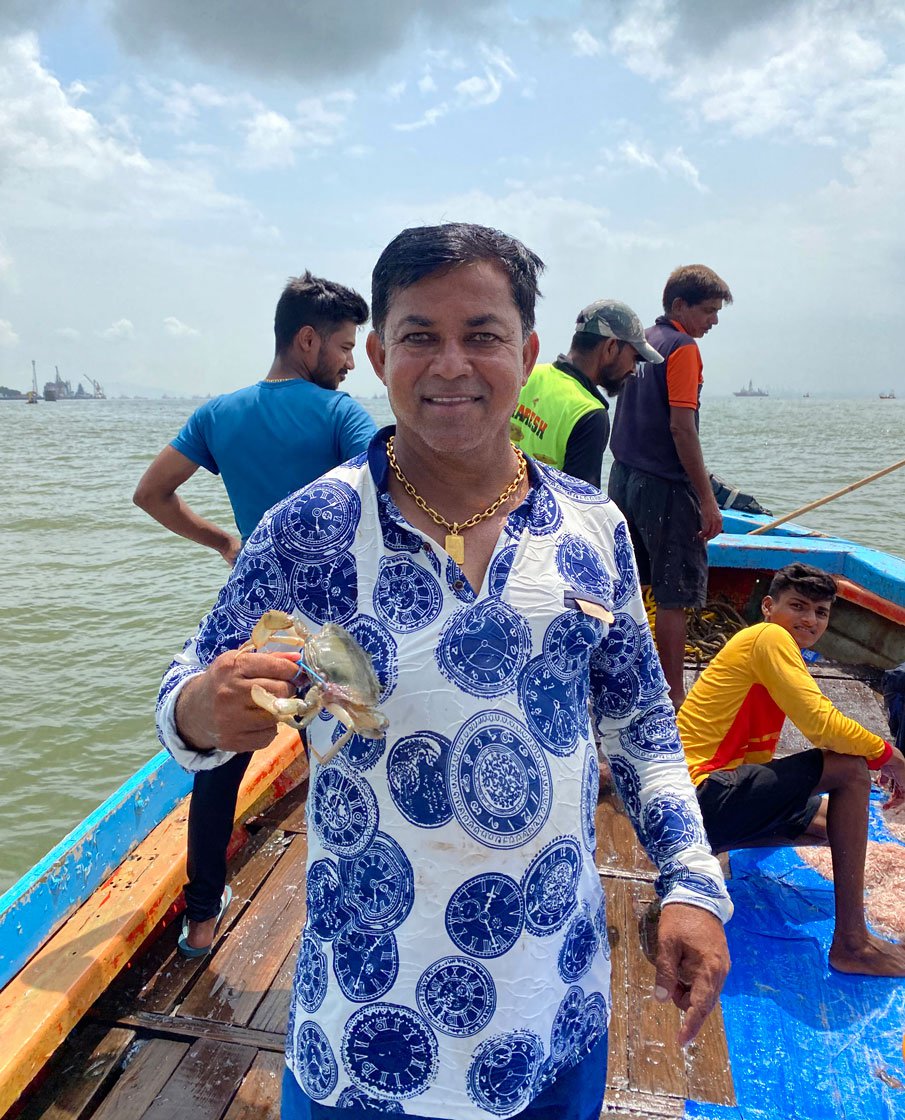
Dilip Koli holding a crab: “During a crisis, farmers at least get some compensation from the government. But fishermen don’t get anything even though farmers and fishermen are both like brothers.”
Then came Cyclone Tauktae on May 14, 2021. “Our boats were destroyed in the high tide. We have faced losses of lakhs of rupees. The government cannot give us just a few thousand rupees and look good in the eyes of other people. The fishermen are still angry [about this],” says Dilip, whose three sons are also fishermen, while his wife Bharti, 49, sells fish to wholesale buyers at Sassoon Dock (see Koli women: fish, friendship and fighting spirit ). “They anyway never do anything for us Koli fishermen," he adds,"but during such cyclones we should be given full compensation.”
Adding to these setbacks is a steady fall in fish catch. “When I was young the price of fish was low, but the price of diesel [for the boat] was also 20 rupees a litre. Now the price of diesel is about 100 rupees a litre and the catch has also reduced,” says Dilip.
The fishermen’s nets come up with far fewer popular fish like surmai , pomfret and sardine, he adds. In 2019, there was a 32 per cent decrease in fish landings (catch that arrives at the ports) on the Maharashtra coast as compared to the previous year, notes the Central Marine Fisheries Research Institute. The report attributes this fall to the cyclonic storms in and around India that year, of which six were severe cyclones.
“Our livelihood depends entirely on nature,” Dilip says. “If nature is not good to us, we will lose both our work and lives.”
And then, with the Covid-19 pandemic, the fishermen at Sassoon Dock have been trying to weather that storm too.
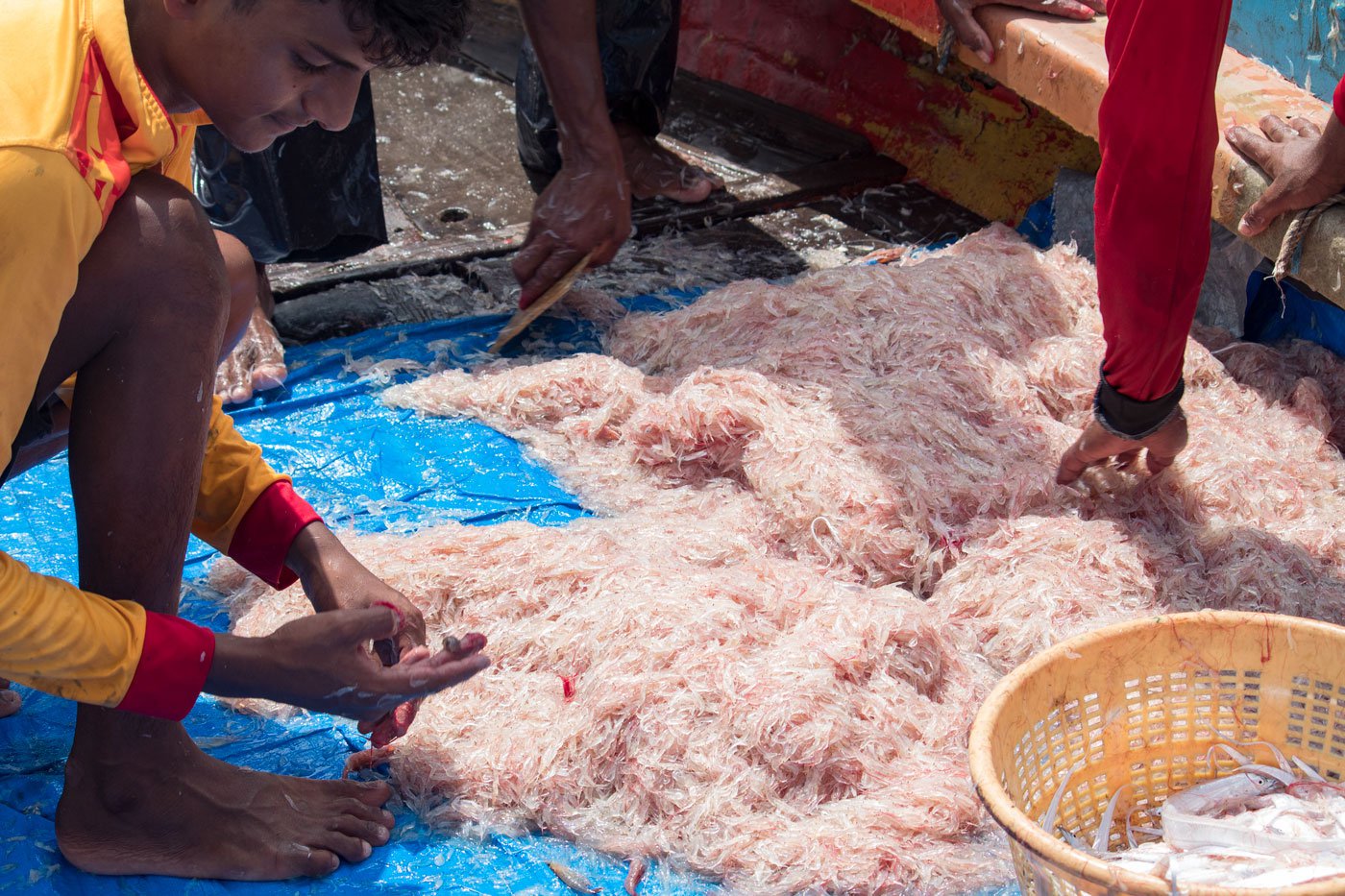
In a 40-minute round trip, the fishermen catch roughly 400-500 kilograms of fish in the monsoon months, and make multiple such trips in 10-12 hours.
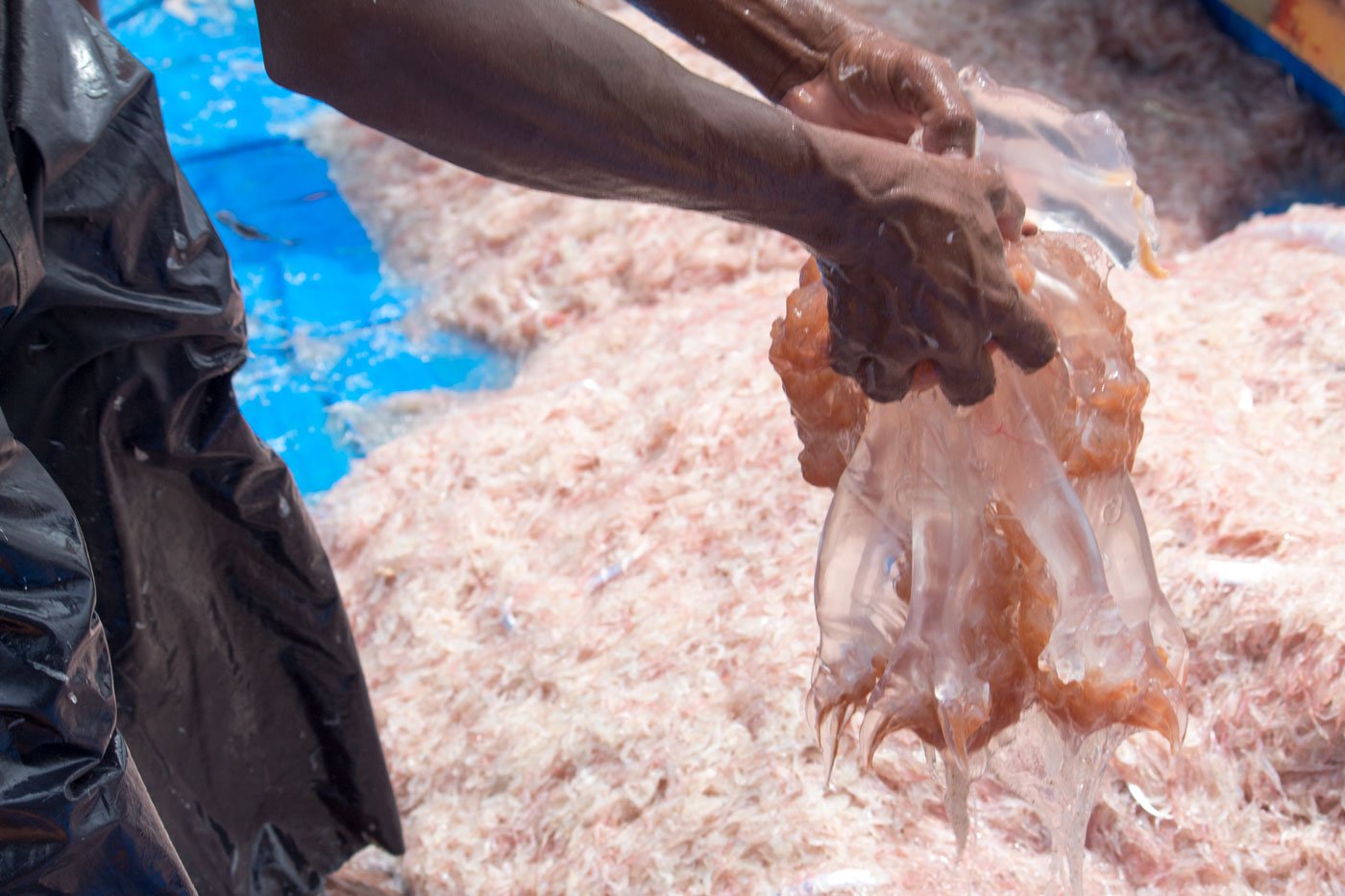
The fishermen say jellyfish is thrown back into the sea because it stinks and almost nobody in India eats these creatures.
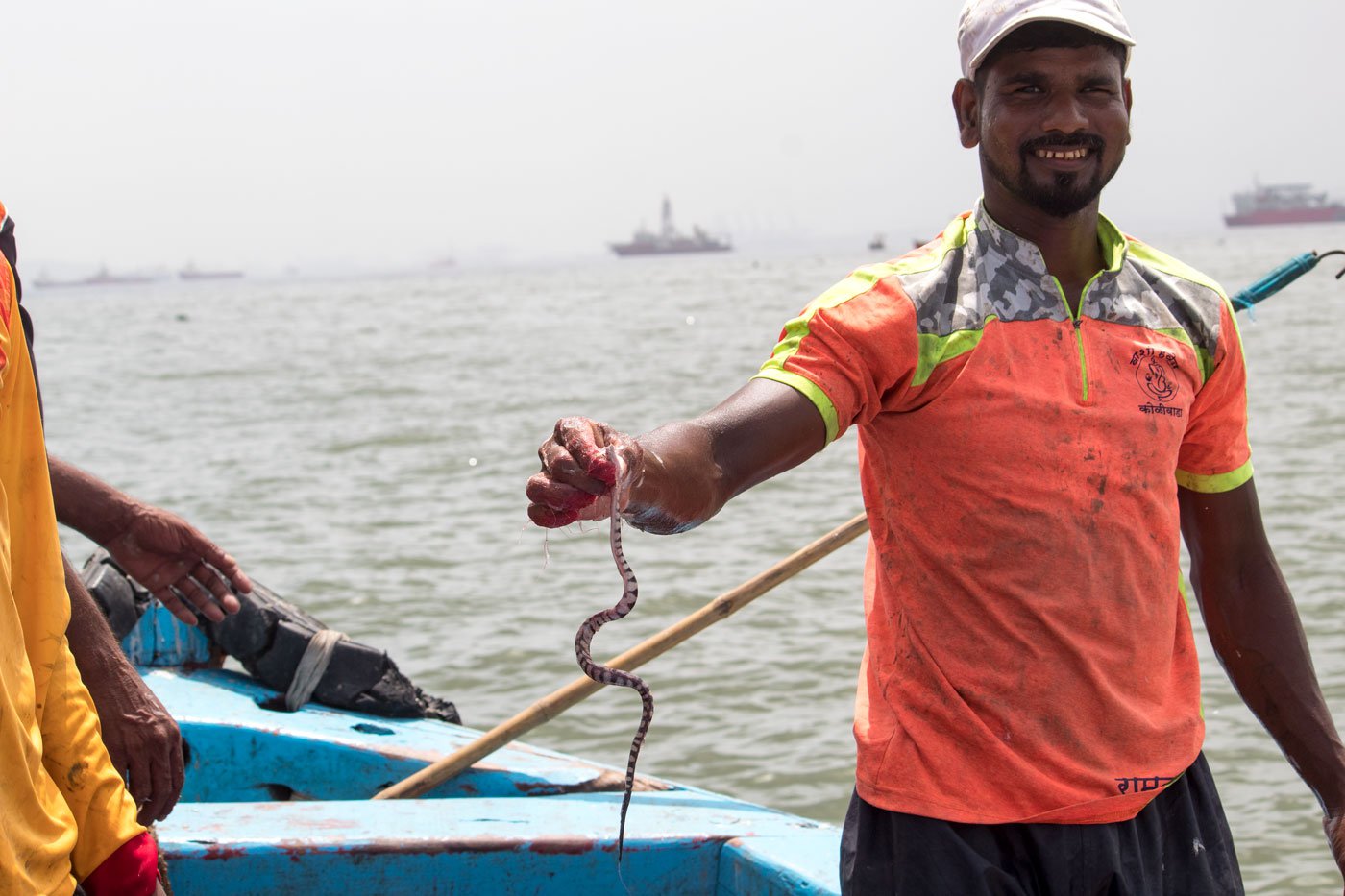
Ramnath Koli, 34, who has been fishing for over 10 years, holds a sea snake caught in a net. “We have to work day and night. There are no fixed hours and the income is also unstable,” he says.
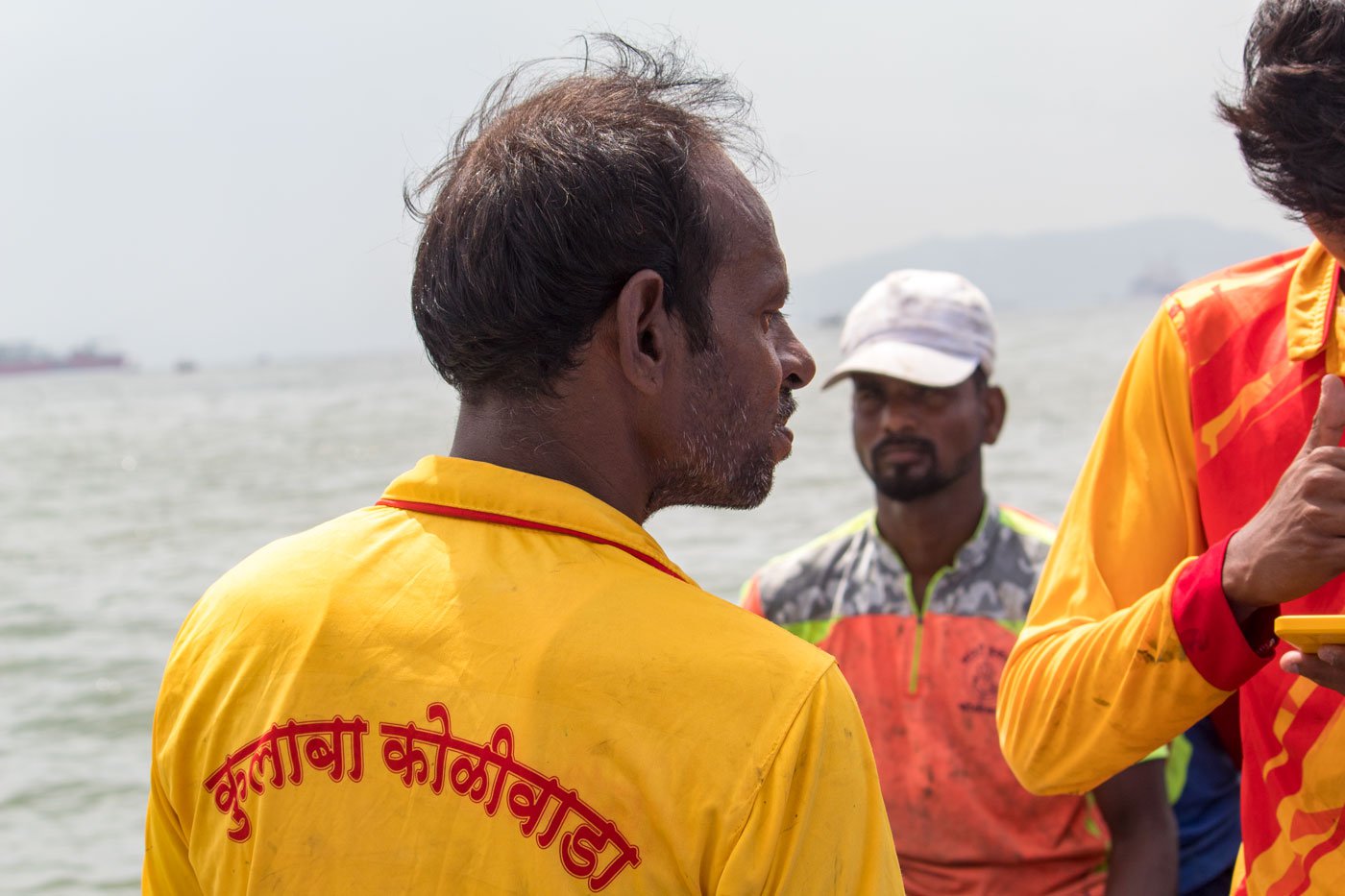
Narayan Patil, 49, has three young daughters and one son studying at a local zilla parishad school in Washi Haveli village, while his wife is a homemaker. He has been fishing for nearly 20 years and says, “I don’t ever want my children to work in this business.”
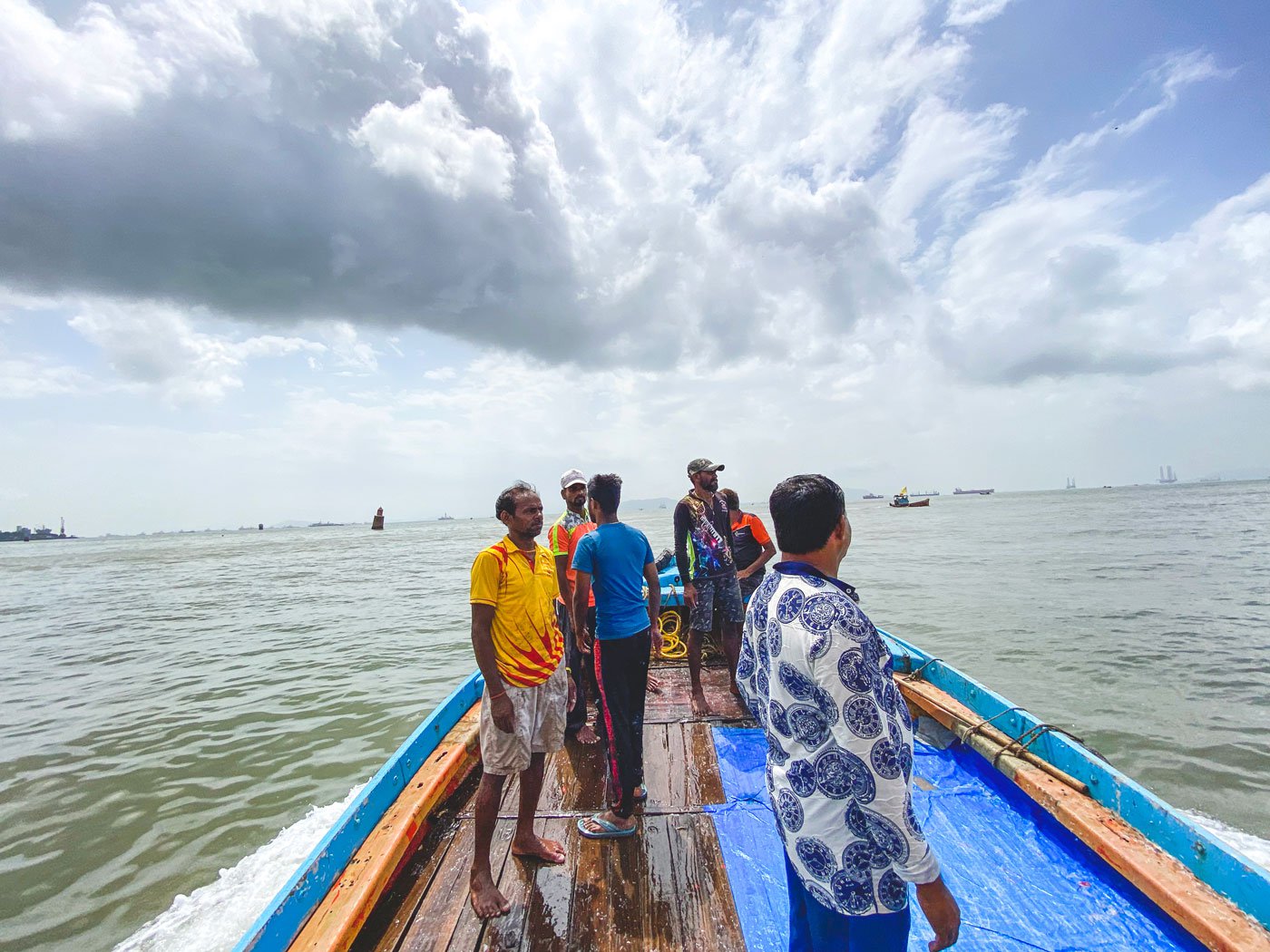
Fishermen moving on to the next stop in the sea looking for a big catch.
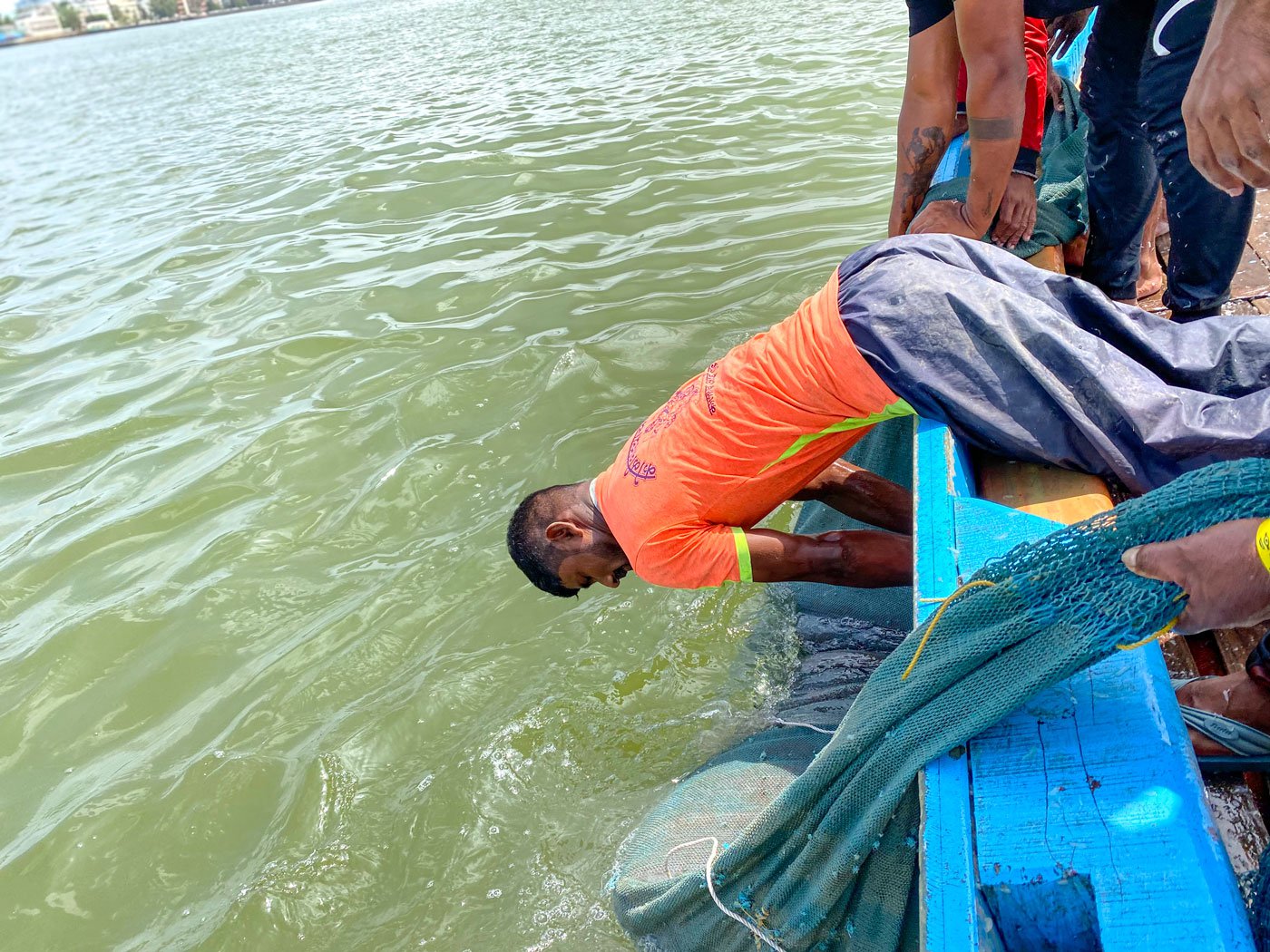
Ramnath Koli dives underwater and divides the net in half so that the weight of the fish can be evenly distributed and it becomes easier to pull the net back into the boat.
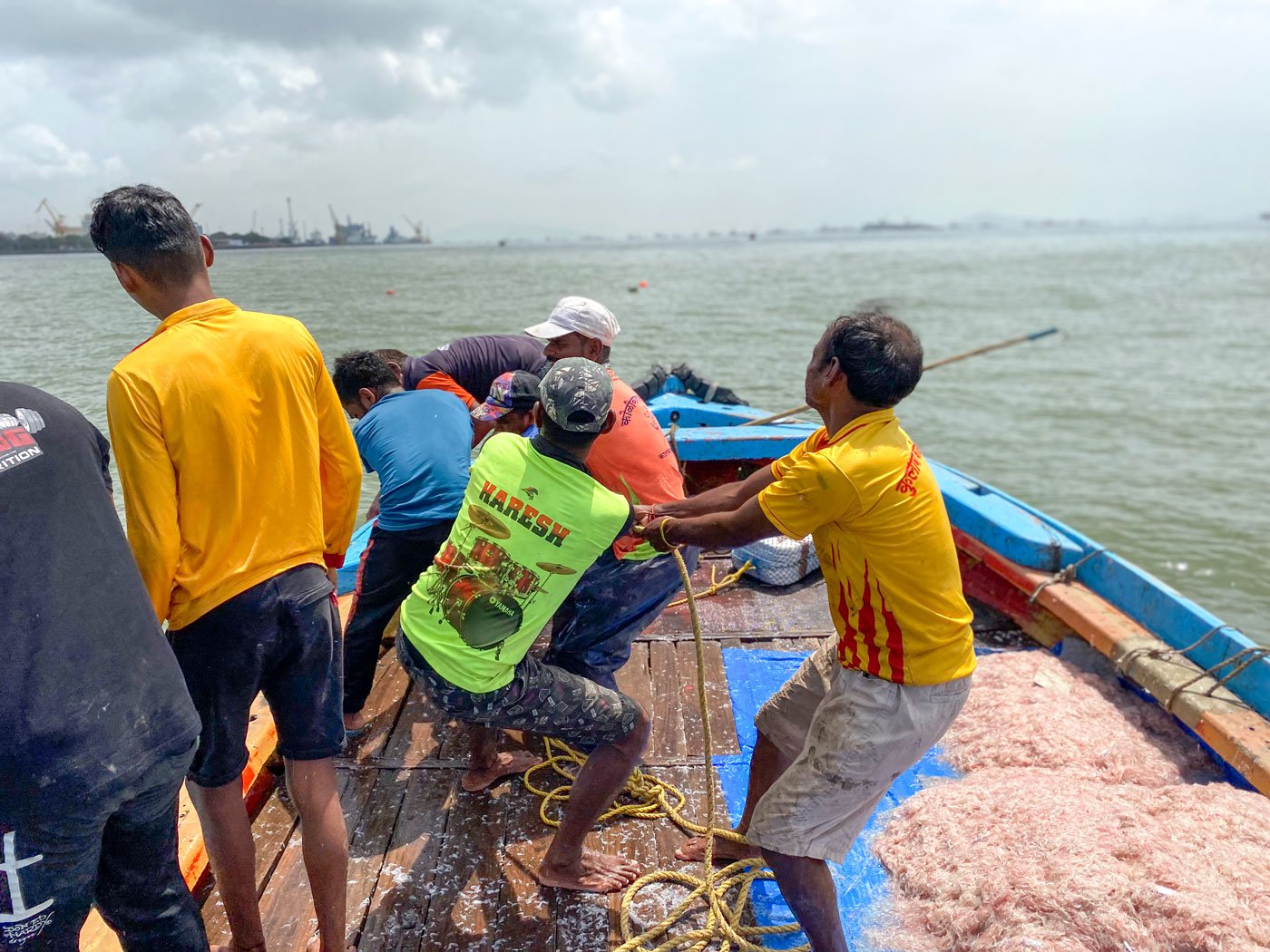
It requires all their strength to pull the fish nets back into the boat from the water.
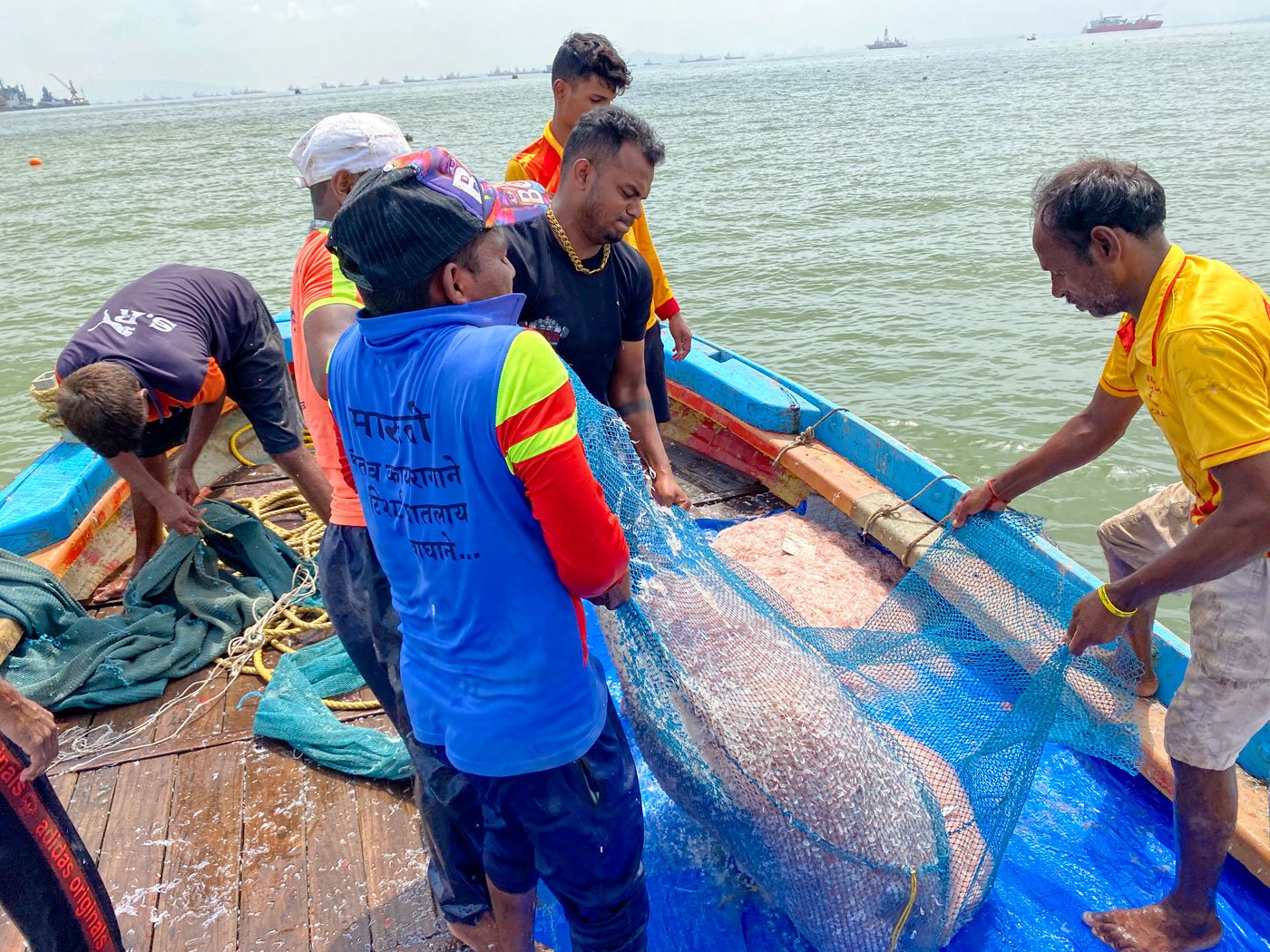
They empty the fish from the nets into one corner of the boat.
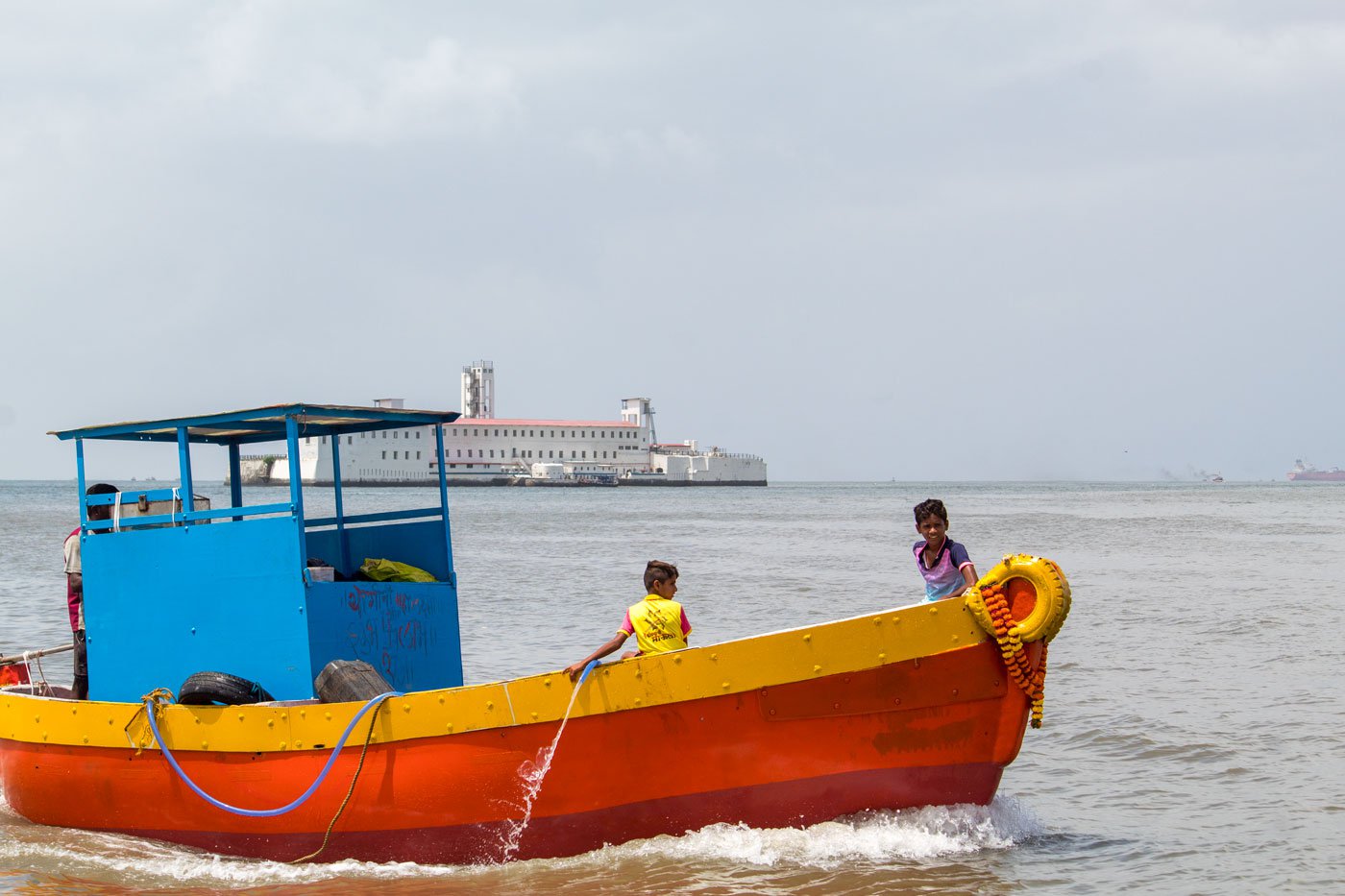
Another boat passes by with young boys waving at the fishermen.
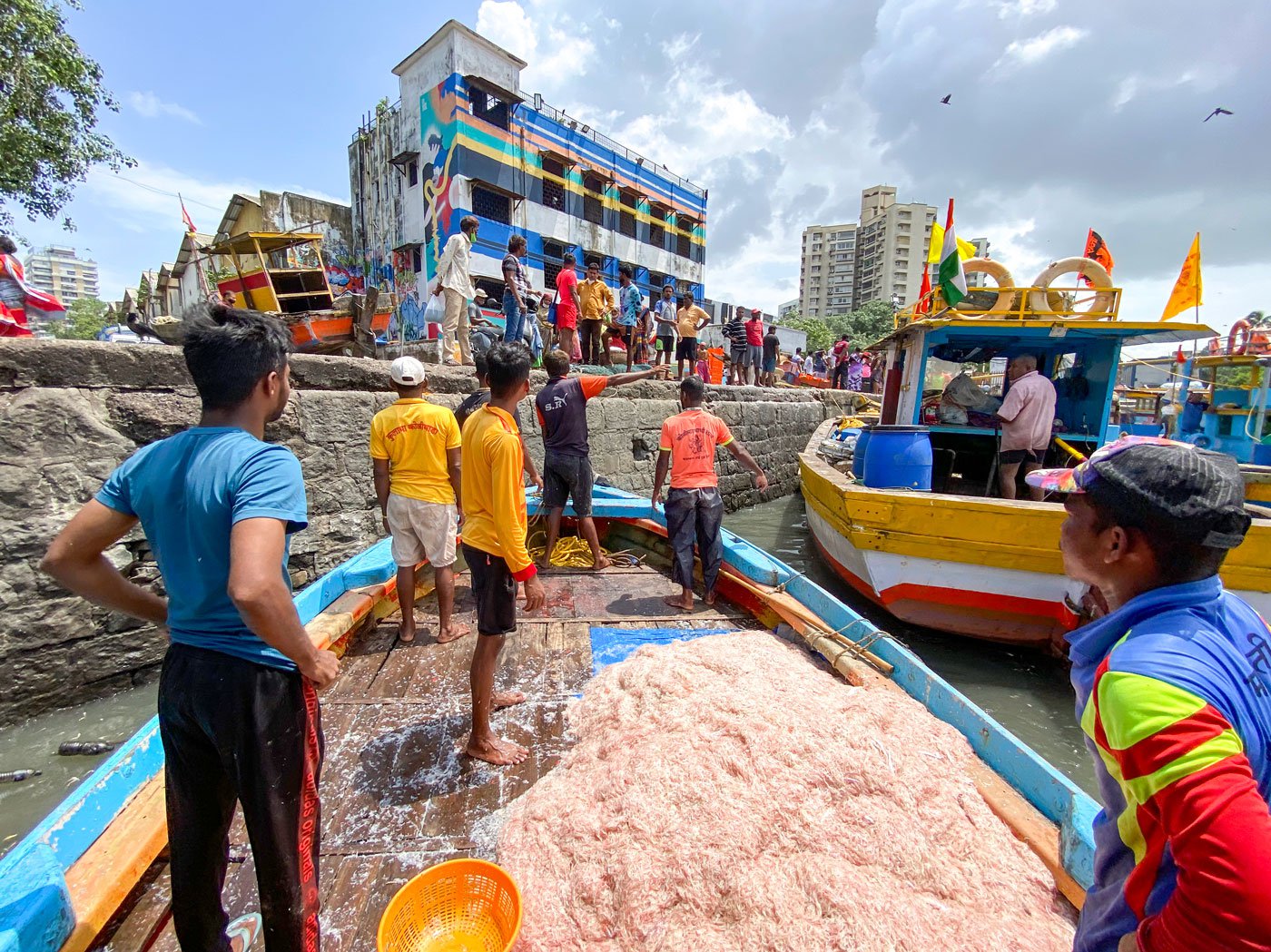
It takes around 40 minutes for one round trip into the sea not far from the shore. Once the boat return to the jetty, a few fishermen jump on to the landing area where the buyers await and start passing big plastic baskets to the other fishermen in the boat.
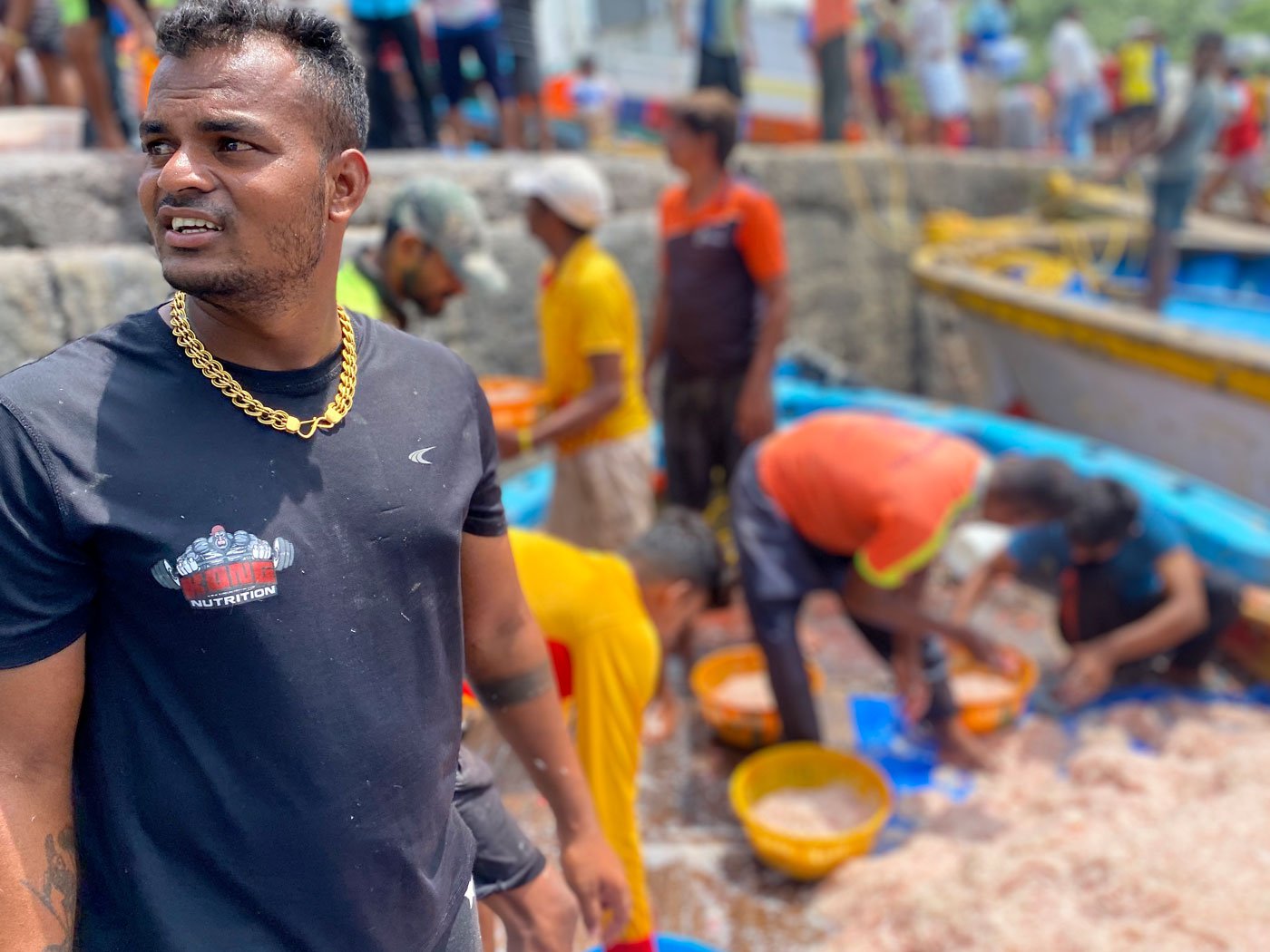
Gaurav Koli, 26, says he always wanted to become a fisherman. He studied till Class 12 and has been working with his father, Dilip Koli, since then.
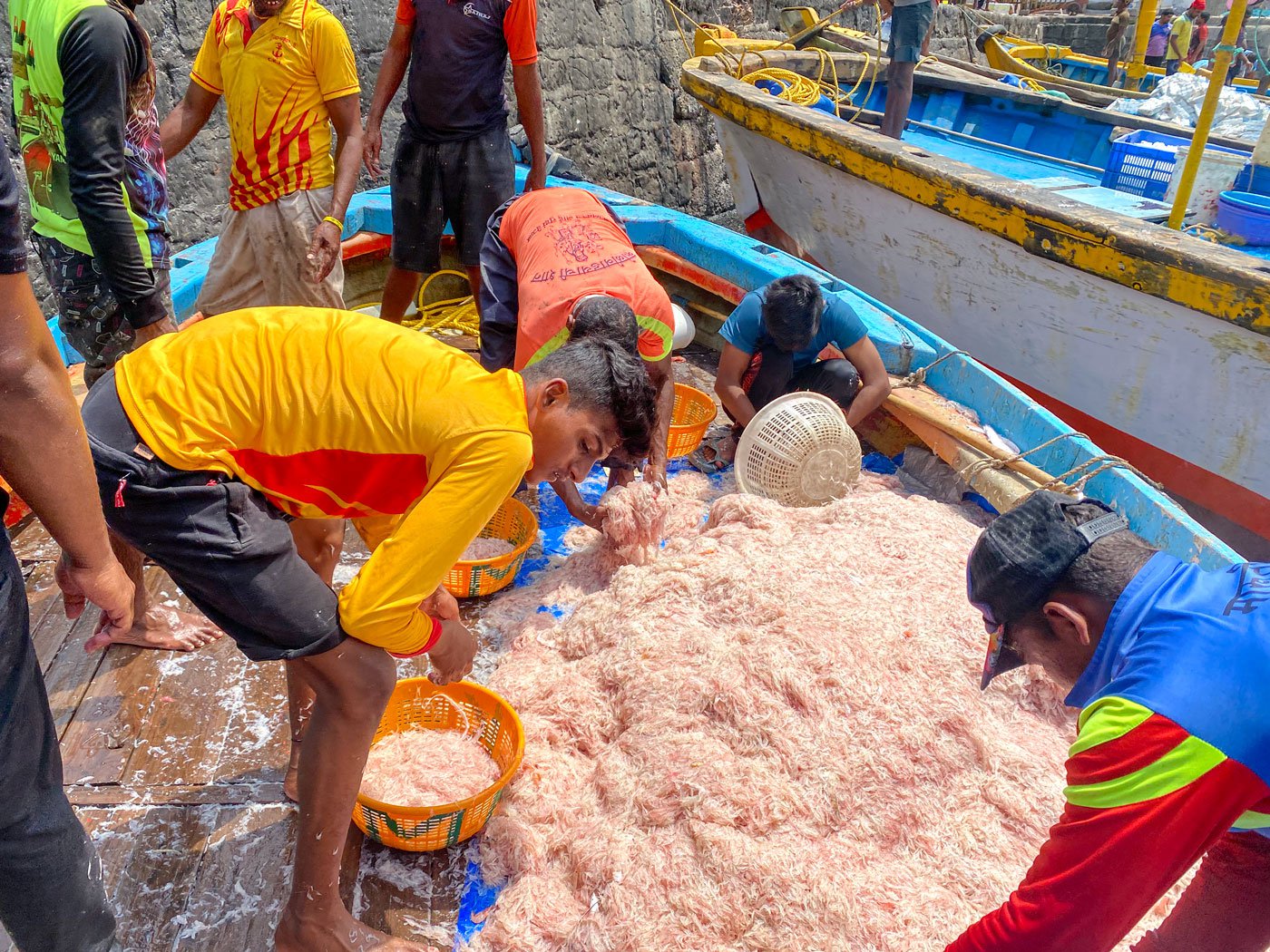
Harshad Koli (foreground, in yellow t-shirt), 19, completed Class 10 three years ago and has been fishing since. His family owns a boat in Washi Haveli village but, he says, “There are no customers there so I came to work here [in Mumbai].”
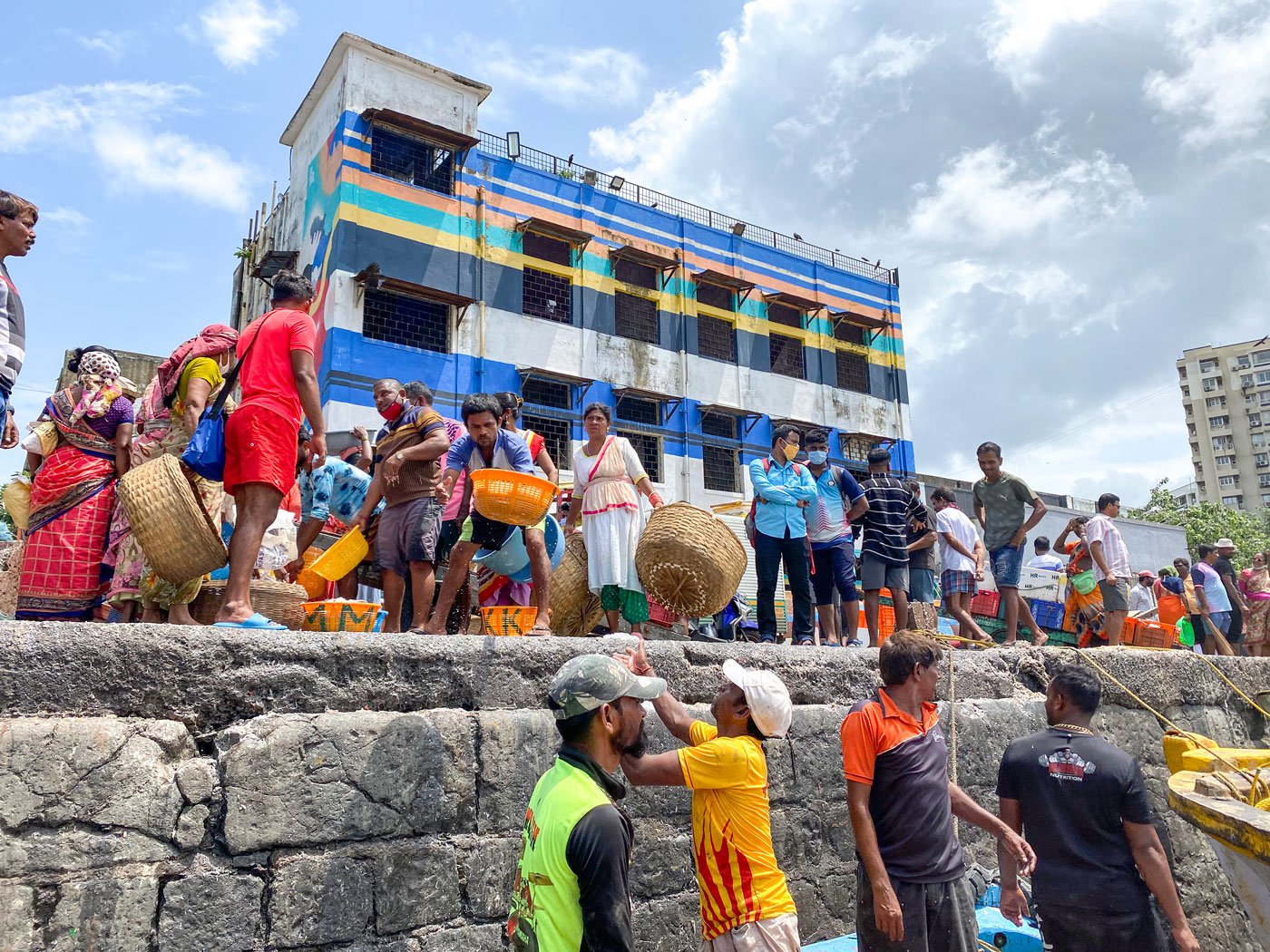
Buyers and auctioneers eagerly wait for the boats with fish to arrive at the jetty.
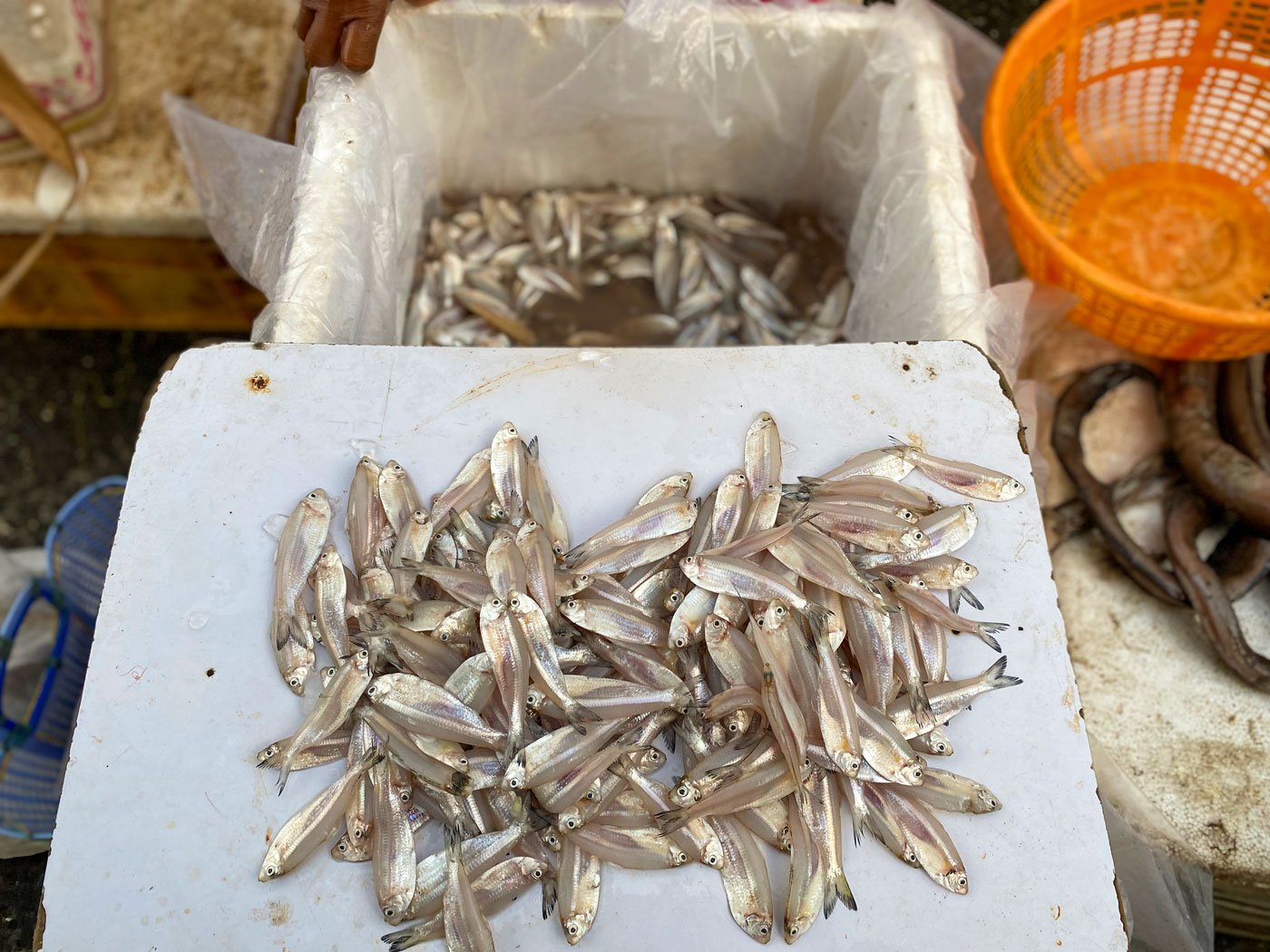
Different types of fish preserved in ice by fish sellers.
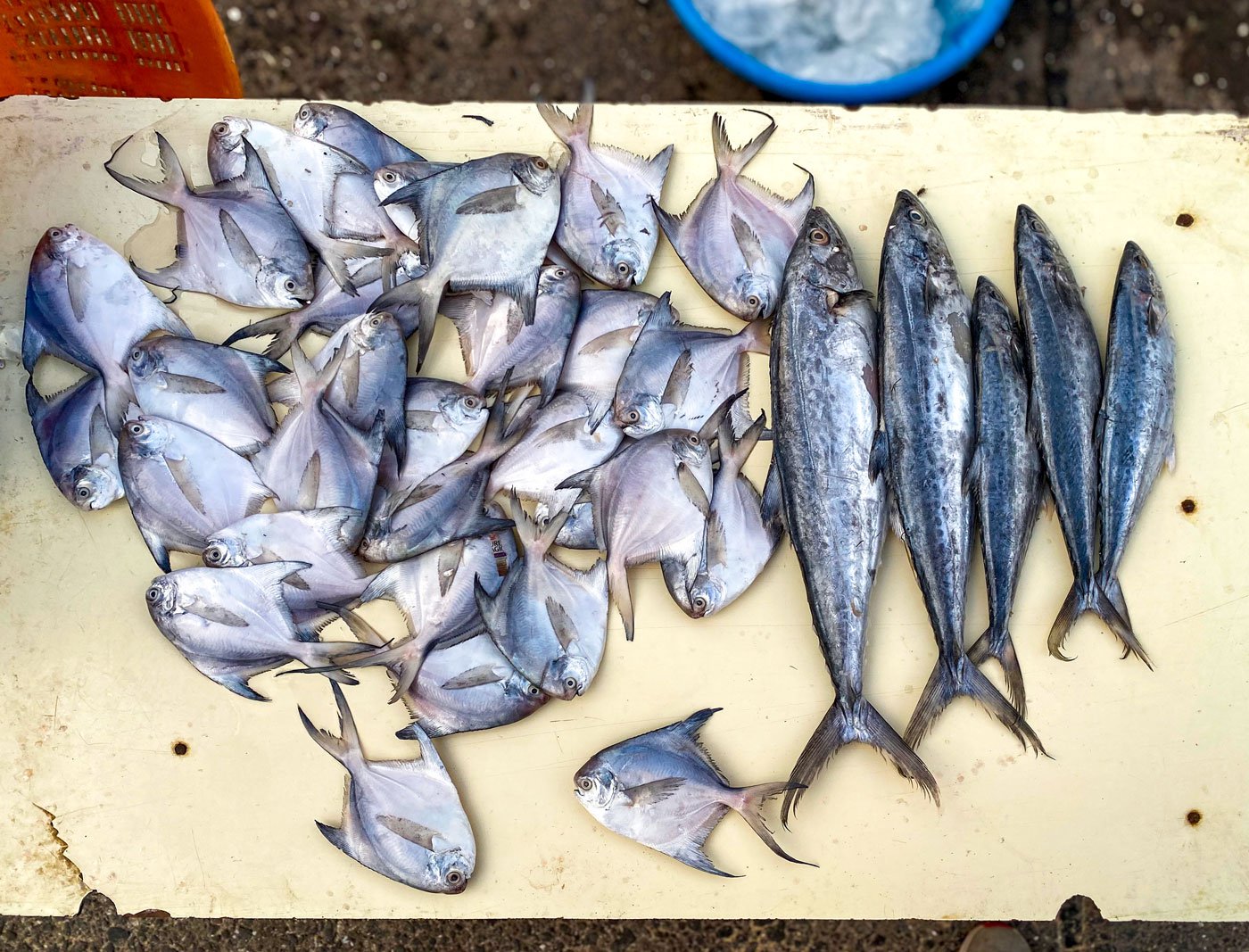
Some of the fish sellers have travelled from Palghar district looking for wholesale buyers.
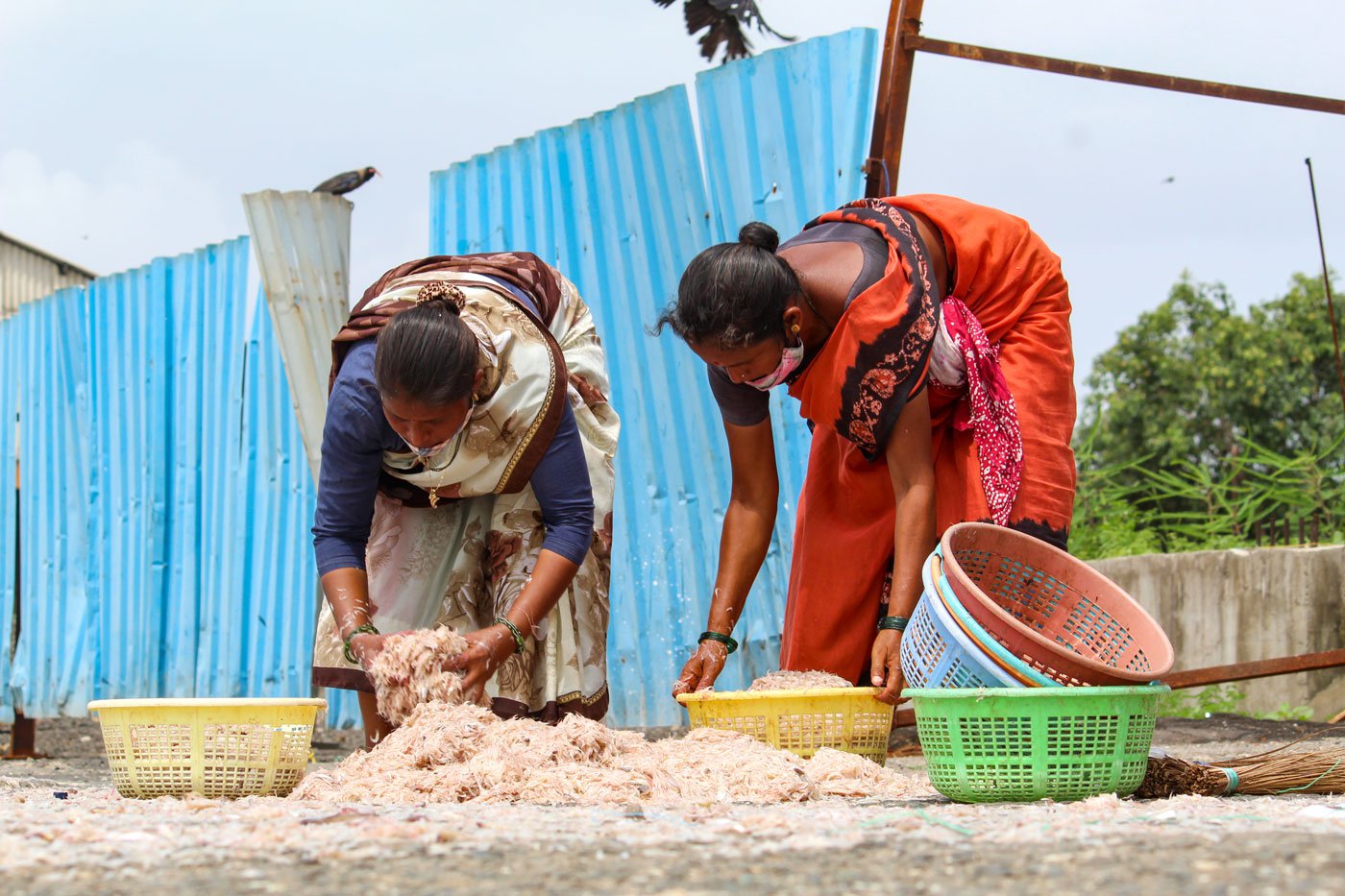
In an open patch at Sassoon Dock fisherwomen spread out fresh kolim (mini-prawns) to dry under the sun.
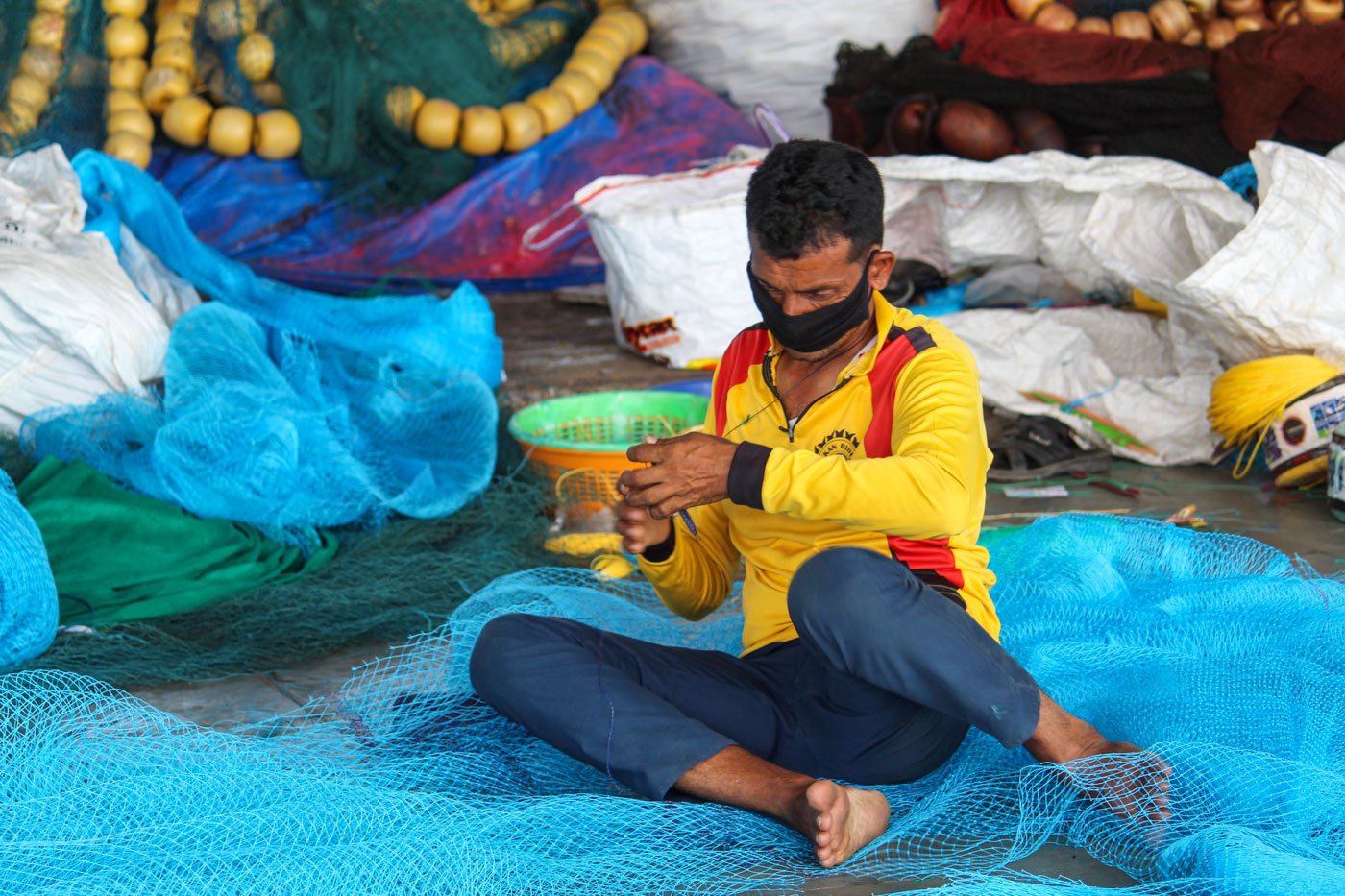
Skilled labourers from Maharashtra’s Palghar district travel to Mumbai’s Sassoon Dock from June to August to mend fish nets and earn Rs. 500-600 a day
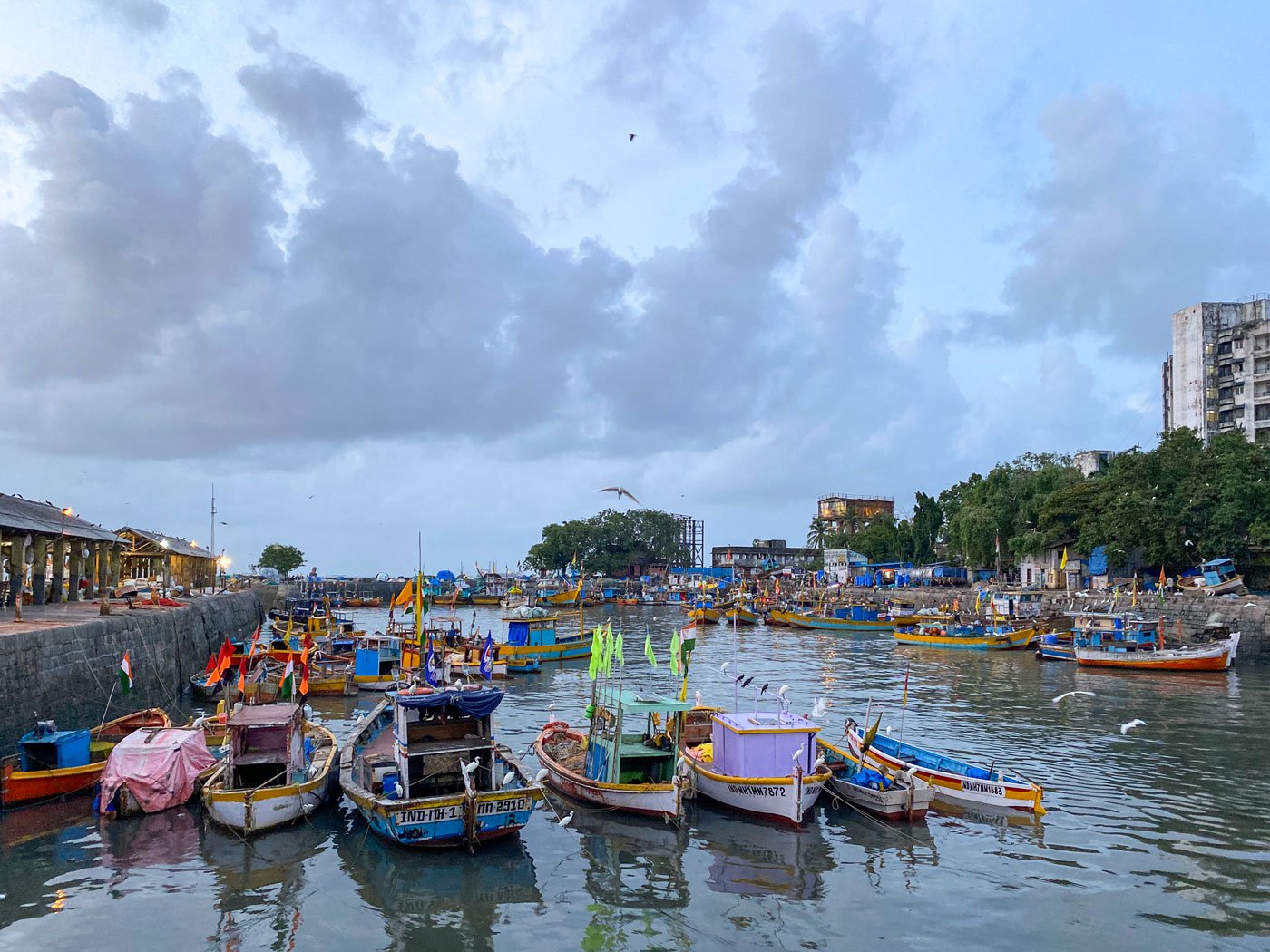
Before the Covid-19 pandemic unfolded, Sassoon Dock would be packed from 4 a.m. with fishermen, fish sellers, boatmen and other labourers. It has seen barely any crowds since the lockdown that began in March 2020.
This story is part of a series of 25 articles on livelihoods under lockdown, supported by the Business and Community Foundation.
